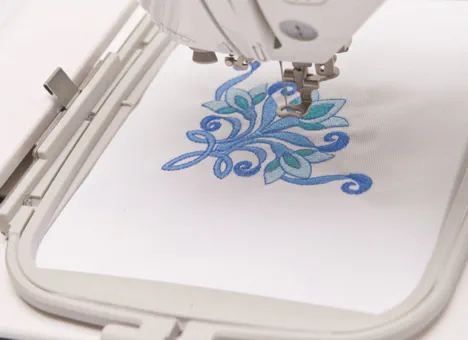8 月 . 06, 2024 13:36 Back to list
Advancements in Computerized Embroidery Machines from Leading Manufacturers and Their Impact on the Industry
The Rise of Computerized Embroidery Machines A New Era in Textile Production
In recent years, the textile industry has experienced a significant transformation, largely driven by advancements in technology. Among the most notable innovations are computerized embroidery machines. These sophisticated devices represent a remarkable shift from traditional embroidery techniques, enabling factories to increase efficiency, improve quality, and expand creative possibilities.
Computerized embroidery machines operate using intricate software that allows operators to input designs digitally. This capability not only streamlines the production process but also enhances precision. Traditional hand embroidery is a time-consuming process that requires skilled artisans. In contrast, computerized machines can replicate complex designs with a level of accuracy that is difficult to achieve manually. This efficiency has enabled factories to meet large order demands while maintaining high standards of quality.
One of the key advantages of computerized embroidery machines is their versatility. Factories equipped with these machines can easily switch from one design to another without the risk of compromising the quality or consistency of the output. This flexibility allows manufacturers to cater to a more diverse array of customer needs, from custom orders to large-scale production runs. As consumers increasingly seek unique and personalized products, the ability to quickly adapt designs becomes a valuable asset.
Moreover, the automation provided by computerized machines significantly reduces labor costs. While traditional embroidery requires a skillful workforce, computerized machines can perform the majority of the work with little human intervention. This shift not only saves on labor but also reduces the potential for human error, further enhancing the quality of the finished product. As a result, factories can allocate their budgets more efficiently, investing in research and development or improving other aspects of production.
computerized embroidery machines factory

The introduction of computerized embroidery machines has also spawned a burst of creativity within the industry. With advanced software, designers have access to an expansive range of tools that allow for the development of intricate patterns and designs. This capability opens up new avenues for artistic expression, encouraging designers to push the boundaries of traditional embroidery. The result is a vibrant array of products that appeal to consumers looking for innovative and unique pieces.
However, the shift towards computerized embroidery does not come without challenges. While these machines can enhance efficiency and precision, they also require a significant investment in technology and training. Factories must be prepared to invest not only in the machines themselves but also in the software and IT support needed to operate them effectively. Additionally, there is a continuous need for trained personnel who can manage and maintain these advanced systems.
As the industry evolves, sustainability also becomes an important consideration. Many manufacturers are incorporating eco-friendly practices alongside their use of computerized machines. These include using sustainable materials, reducing waste, and implementing energy-efficient processes. By aligning technological advancements with sustainable practices, factories can appeal to environmentally conscious consumers and contribute positively to the planet.
In conclusion, computerized embroidery machines are revolutionizing the textile industry by enhancing efficiency, precision, and creative potential. As factories embrace these innovations, they not only improve their operational performance but also adapt to the changing preferences of consumers. While the transition to this modern technology requires investment and training, the benefits—ranging from cost savings to enhanced product offerings—are significant. The future of embroidery is bright, marked by a harmonious blend of technology and creativity that is set to redefine the standards of textile production.
-
Professional Embroidery Machines High-Speed Industrial Solutions & Custom Designs
NewsMay.30,2025
-
Premium 2-Head Embroidery Machines Reliable Manufacturers & Suppliers
NewsMay.30,2025
-
12 Head Embroidery Machines High-Speed & Precision Stitching
NewsMay.30,2025
-
Premium Tshirt Embroidery Machines High-Speed & Precision Stitching
NewsMay.29,2025
-
6 Head Embroidery Machines High-Speed Multi-Head Designs & Suppliers
NewsMay.29,2025
-
Commercial Automatic 2 Heads Embroidery Machine Caps and shirts 12 15 Needles Two Heads Computerized Embroidery Machine
NewsMar.07,2025

Copyright © 2025 Xingtai Pufa Trading Co., Ltd All Rights Reserved. Sitemap | Privacy Policy
